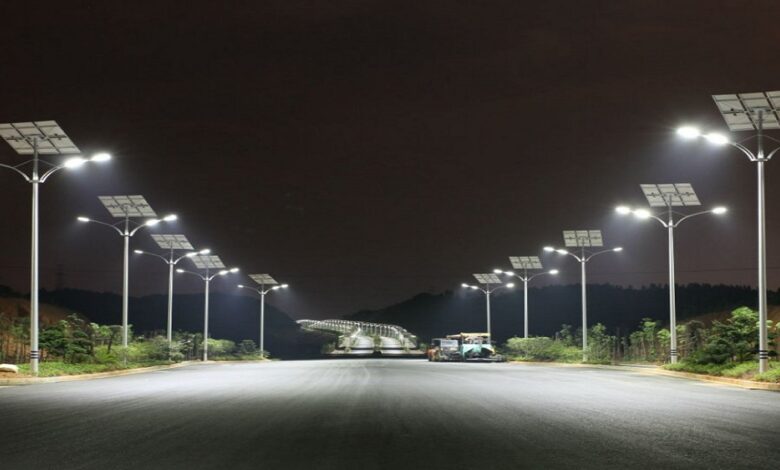What is the Process of Fabrication of Street Light Poles?

Light poles for street lighting are vital components of our urban infrastructure, making sure that our cities are secure and well-lit at night. They help illuminate roadways as well as sidewalks and public spaces, improving security and visibility. Have you ever wondered how these imposing sentinels of light are made? This article explores the intricate process of fabrication of street light poles, shining more light on the steps involved, the materials used as well as the importance of quality assurance.
Basics of Street Light Poles
Street light poles are available in different sizes and shapes and are specifically designed to meet the particular requirements of a place. They may be elaborate traditional, contemporary or practical, based on the aesthetic and practical needs of the space they’ll illuminate. Common materials used for their construction are aluminum, steel and concrete. The choice of materials is based on factors like weather, durability, as well as budget.
Fabrication Process
Material Selection
The first step to fabrication of street light poles involves the material selection. The chosen material must be strong, resistant to environmental conditions and strong enough to support the lights. Steel is a preferred choice because of its durability and strength and aluminum is selected due to its lightness. Concrete is, however, ideal for places where durability and aesthetics are essential.
Cutting and Shaping
When the material is selected then it’s time to cut it and form it into the form you desire. The latest machinery is used to cut and form the material to the pole’s specifications for design. This step is vital to ensure consistency and precision of the finished product.
Fabrication and Welding
Following cutting, shaping and welding after shaping, the pieces are then welded together to form the structure of the pole. Expertly trained welders make use of precise methods to ensure that the joints are durable and secure. The design of the pole may include accessories such as brackets for lighting fixtures, as well as access doors to allow maintenance.
Galvanization
Galvanization is the most important process to shield your pole against corrosion. The entire pole is submerged in a hot bath of zinc and forms an extra layer of protection to shield the pole from the elements such as rain and water.
Powder Coating
To improve the look of the pole and also to protect it from weather damage To enhance the appearance of the pole, a coated powder is put on. It not only provides the color, but also acts as a shield against UV radiation, thus ensuring the longevity of the pole.
Quality Control
Before the street light pole is ready to be installed it is subjected to rigorous quality control tests. These tests check the integrity of its structure, correct galvanization, as well as the quality of the paint. Only after these tests are passed is a pole considered to be ready to use.
Role of Technology
Modern technology plays a crucial part in the manufacturing process. The computer-aided design (CAD) software helps in the creation of precise blueprints, and robotic welding machines guarantee the highest quality and consistency of welding. Automation speeds production while ensuring top quality standards.
Conclusion
The process of making the poles for street lights is an intricate and exact process that involves the selection of materials, cutting shapes, welding, galvanization, coating with powder, and strict quality control. They are not just functional, but also contribute to beautification of the urban environment. Knowing the intricate details of their creation reveals the significance of these vital components in our life.
FAQs
Which are the top popular types of materials used in lighting poles for streets?
The most commonly used materials for street light poles include aluminum, steel and concrete. The selection of the material is based on factors like the climate, durability, and budget.
What are the benefits of galvanization for manufacturing?
Galvanization is vital as it forms an outer layer of protection that protects the pole from environmental and corrosion elements, which ensures its durability over time.
How can street light poles aid in urban aesthetics?
Street light poles can be found in different designs, which enhance the appeal of urban zones. They could be elaborate traditional, modern or functional, based on the style of the place.
What role will technology play in the construction of street lights poles?
Technology, including CAD software or robotic welding machines, aids in the design process and manufacture which ensures top-quality and efficient production.
Street light poles are being inspected for quality?
Yes, street light poles are subject to strict quality control tests which include the quality of galvanization, structural integrity and paint quality prior to being installed in urban areas.



